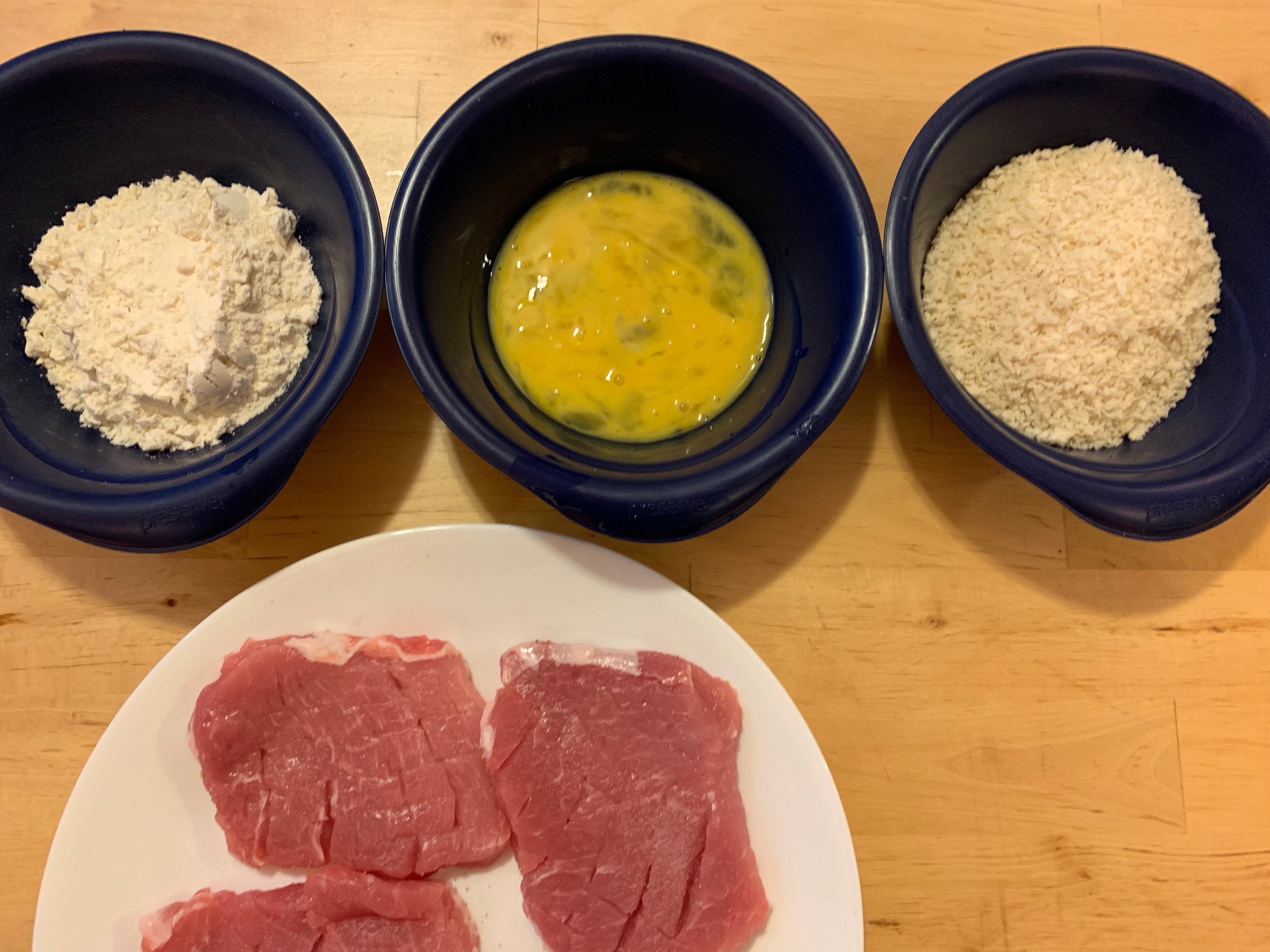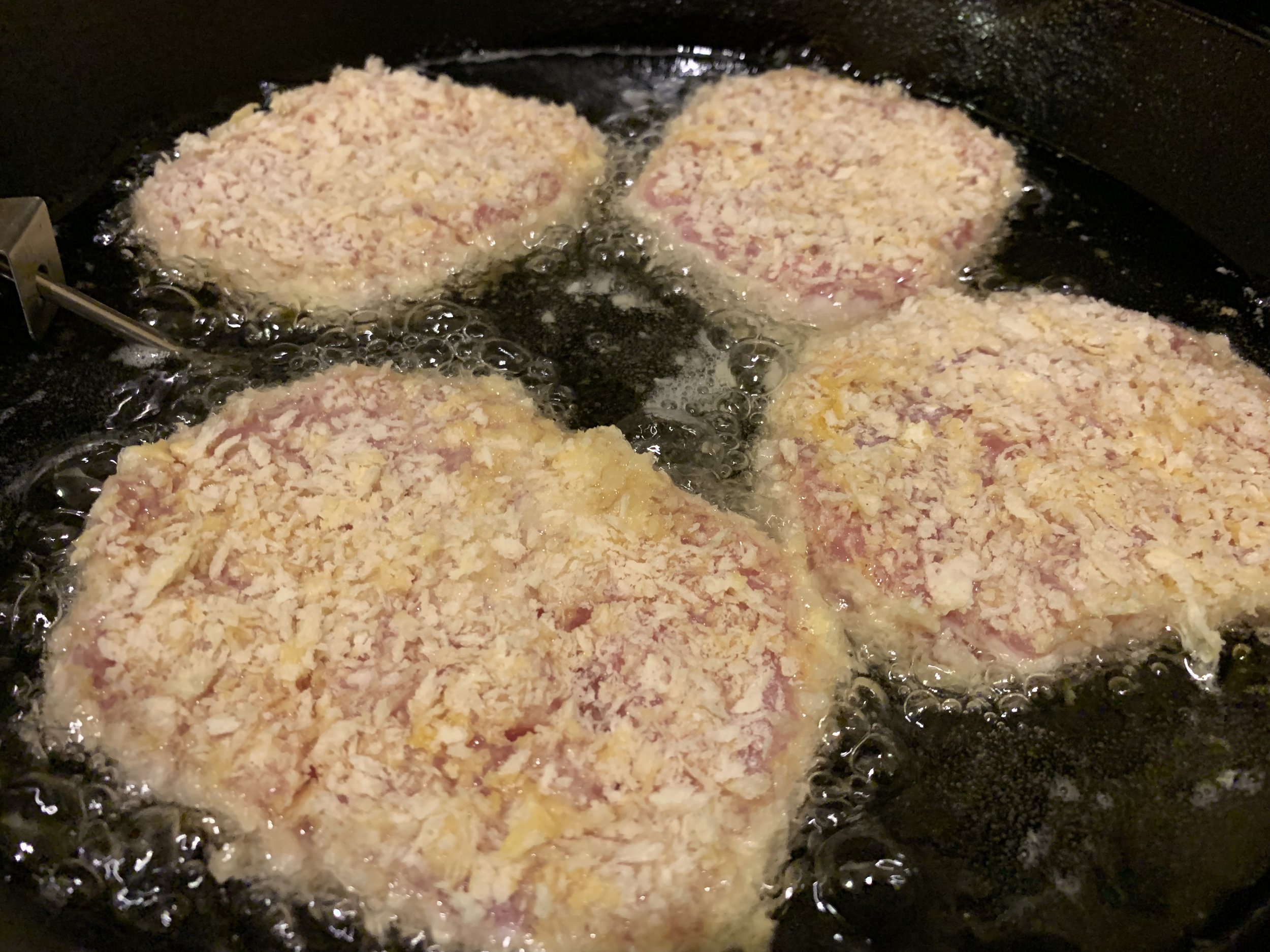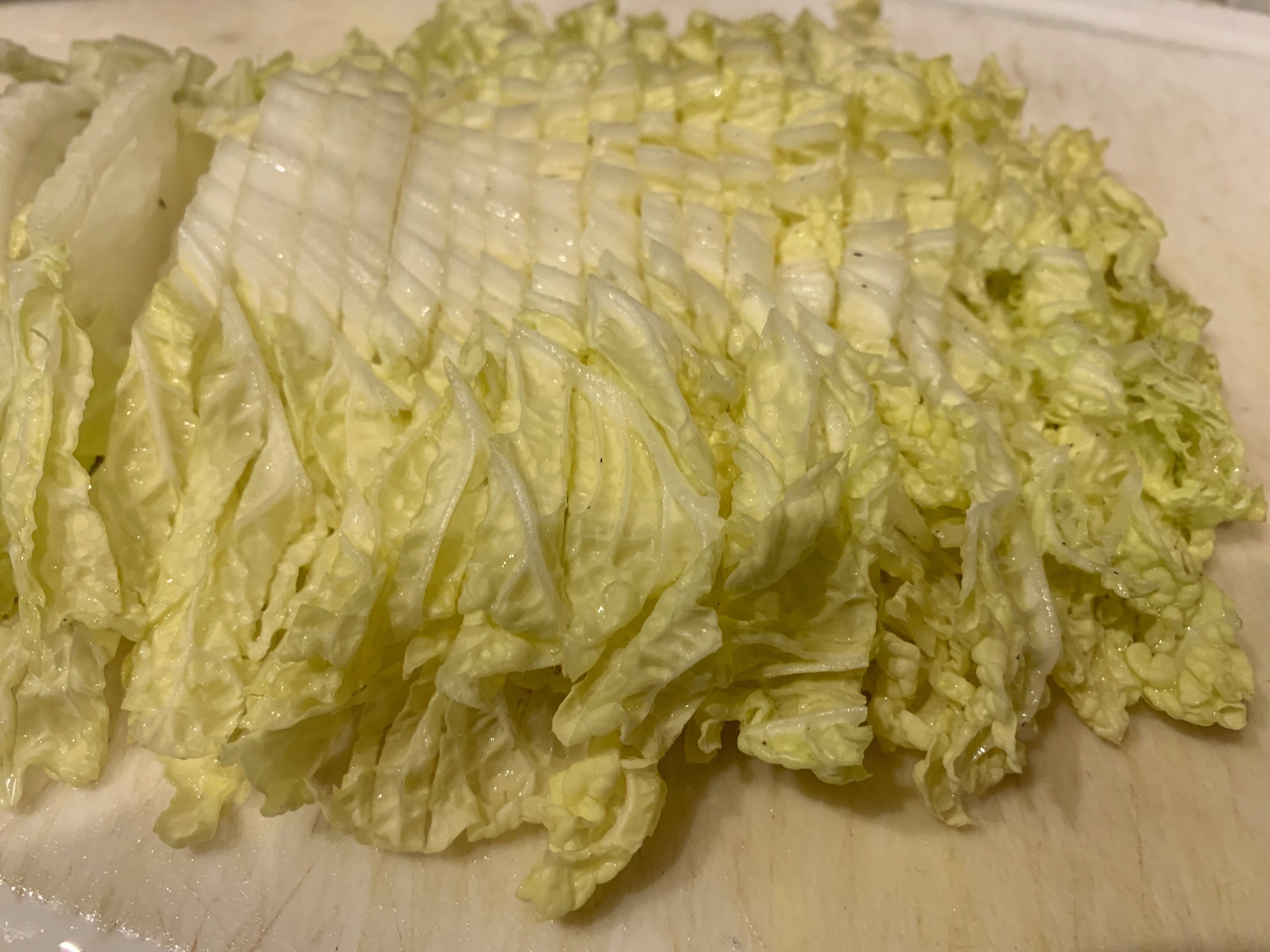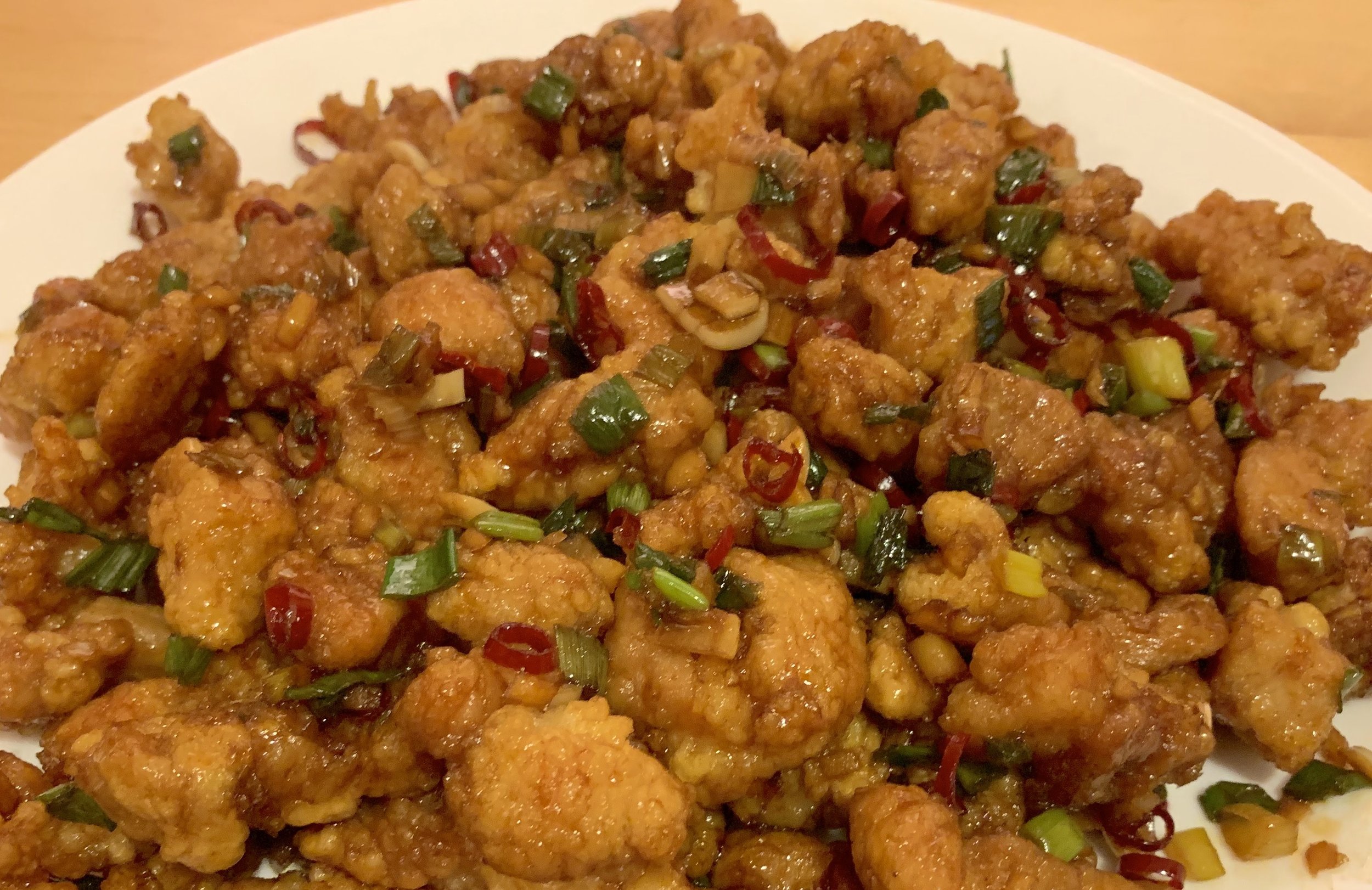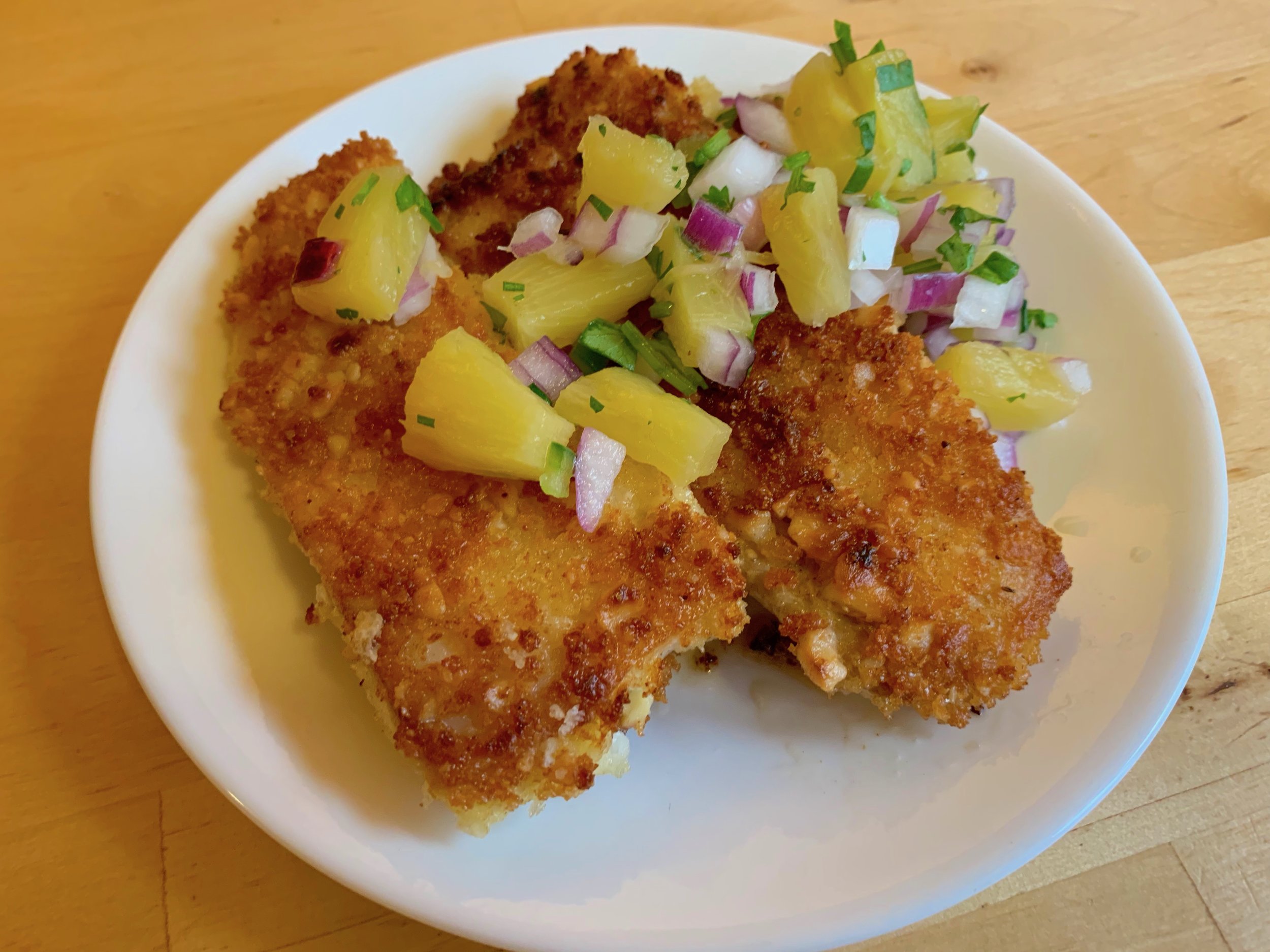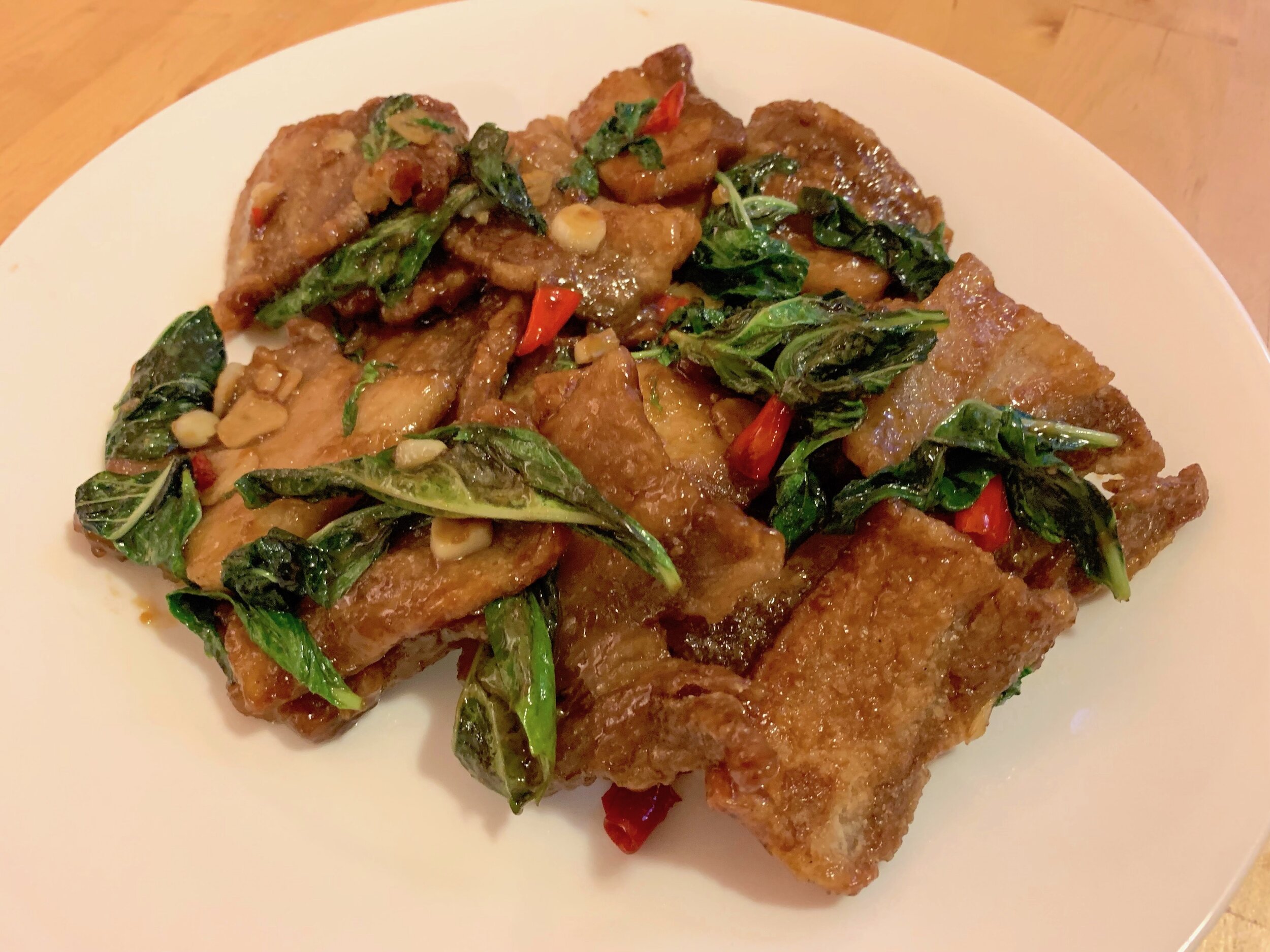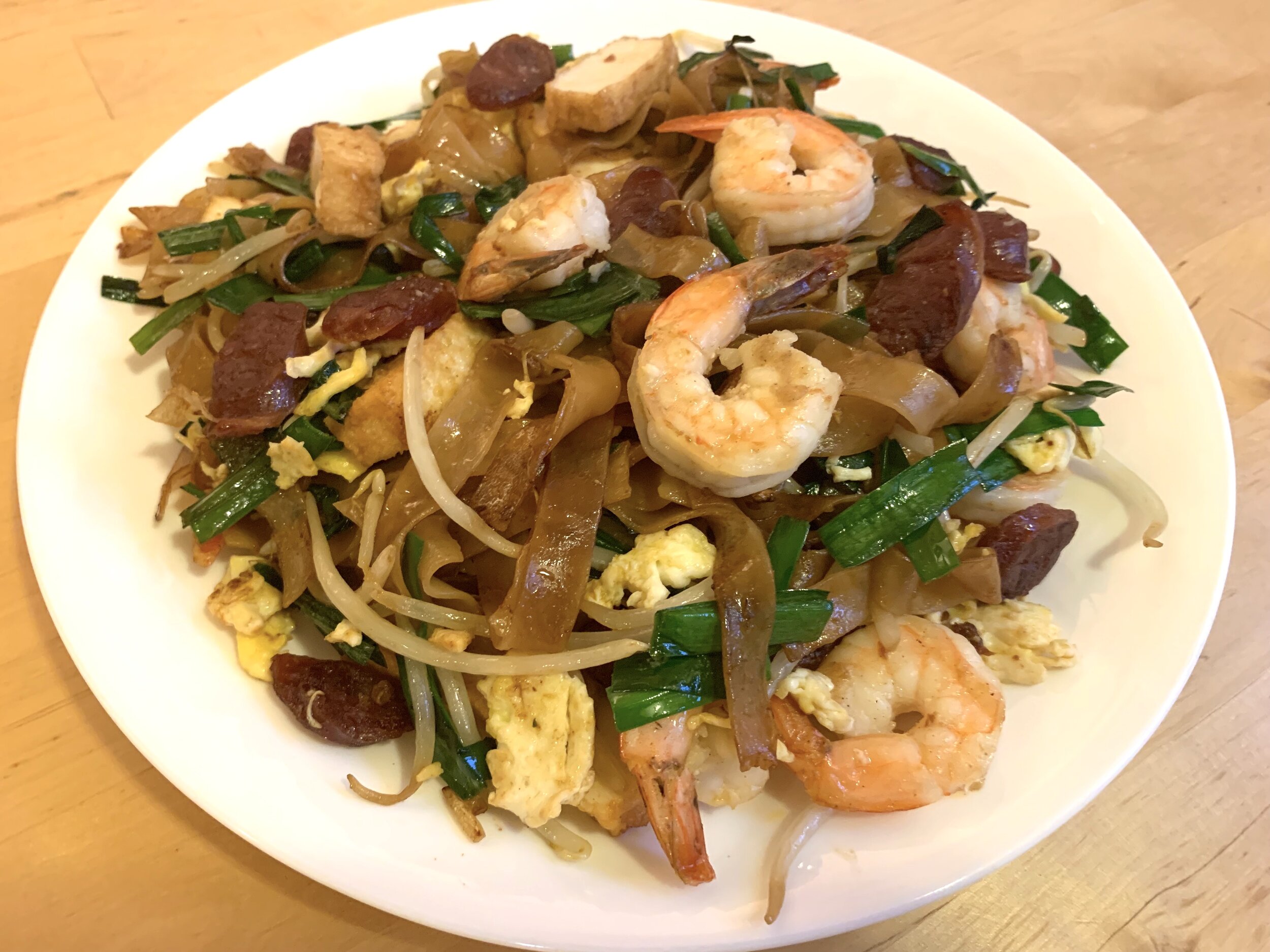Tonkatsu
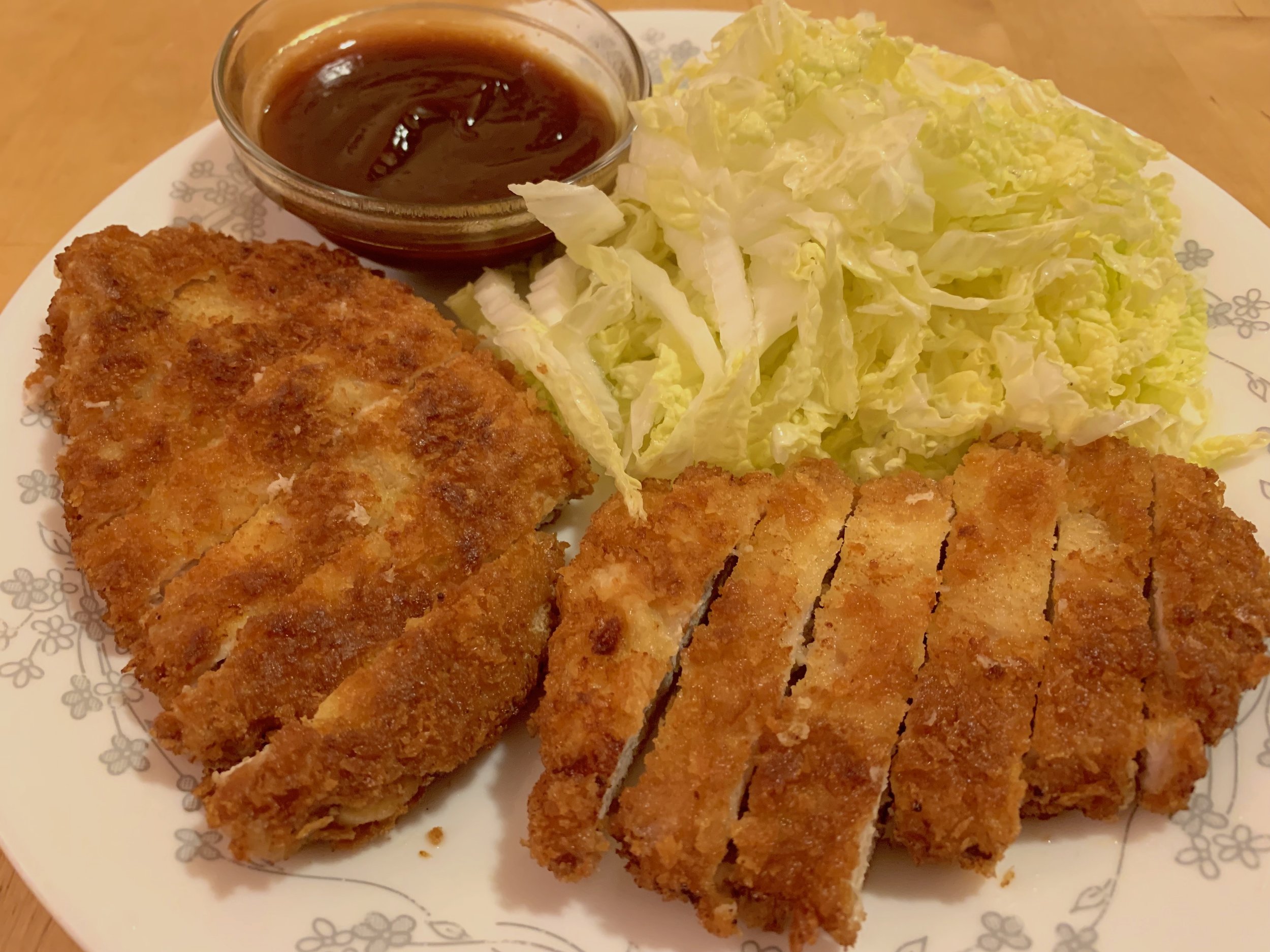
豚カツ
Tonkatsu [1], a fried pork cutlet, is a modern staple in Japanese restaurants around the world. In Japan, tonkatsu is often eaten by students before into an exam or by those going into a competition, as “katsu” is a homophone for the Japanese word for victory (勝つ).
The story of tonkatsu begins in the Meiji Restoration, a time of great societal and economic change for Japan [2]. The second half of the 19th century saw the industrialization of the country and the establishment of a market economy, the creation of a modern army and the abolition of the samurai class, and the rapid expansion of the navy and merchant marine. It also saw the reintroduction of meat to Japanese cuisine, ending a millennia-old taboo. This shift was not without its growing pains, but when the emperor himself ate meat at the public New Year’s feast in 1872, resistance to the idea began to fade. Today, both beef and pork are important parts of Japanese cuisine.
Tonkatsu is a versatile dish, with plenty of service options. This recipe serves the cutlets with shredded cabbage and tonkatsu sauce, but tonkatsu is also often served with egg over rice (katsudon), in a sandwich, or with Japanese curry.
Ingredients
For the Pork
4 pork loin chops (1 lb)
¼ cup flour
1 egg
1 cup panko breadcrumbs
Salt
White pepper
Vegetable oil
For the Sauce
1 tbsp ketchup
2 tsp Worcestershire sauce
2 tsp oyster sauce
1 tsp brown sugar
4 leaves Napa cabbage
When frying cutlets, we want to achieve a thin, crisp coating, while the meat remains tender and juicy. We will take a few steps when preparing the pork loin to ensure that each bite is tender. Cut the loin into chops about ¾ to 1 inch thick, and trim off any surrounding fat and connective tissue. This makes the cutlet easier to eat after it’s been fried, and also prevents it from curling up when cooked. Next, with the tip of a sharp knife, score both sides of each pork chop in a crosshatch pattern, to a depth of about ¼ inch. We do not want to cut the cutlet into pieces, so be careful not to cut too deeply! Scoring the cutlet in this way will sever about half of the muscle fibers in the pork, making the tonkatsu more tender and easier to chew.
As the loin is a relatively lean cut, we have to keep the cook time to a minimum to prevent the meat from drying out. We therefore want to make the pork pieces uniformly thin. As an added bonus, a high surface area to volume ratio means more crispy coating! We will accomplish this by pounding the meat to a uniform ½ inch thickness. Cover the cutlets with a piece of plastic wrap, and pound with a meat mallet or a rolling pin. Remember that we are trying to flatten the meat, not destroy it, so strike straight down with consistent force, and distribute the strikes evenly. Avoid striking at an angle, as this can tear the meat. If you don’t have either a mallet or a rolling pin, you can use a heavy pan or even a can.
Once the cutlets are pounded, season both sides with salt and white pepper, and set aside. It is now time to contemplate breading. Breading can be a messy process, so it is best to work as an assembly line. Prepare a breading station by placing a ¼ cup of flour into a shallow bowl. In a second bowl, beat the egg, and in a third bowl, place a cup of panko breadcrumbs. At the end of the line, have a plate standing by on which you can deposit the breaded cutlets. We will bread the cutlets one at a time, using one hand to handle the dry steps (flour and breadcrumbs) and one hand to handle the wet steps (the egg). Doing this will prevent too much breading from sticking to your fingers.
Place a cutlet into the first bowl and dredge it in the flour, coating both sides. We want the final coating to be thin and to cling to the meat, not separate as a thick, doughy layer after cooking. The usual culprit for a doughy coating is too much flour when breading. Be sure to thoroughly shake off the excess flour to avoid this fate. Next, place the floured cutlet into the egg, and coat well. Finally, place the cutlet into the panko breadcrumbs. Press both sides of the cutlet into the panko to help the breadcrumbs adhere. Panko coatings stick well after being cooked, but require delicate handling prior to hitting the oil. Place the breaded cutlet on the plate, and repeat with the other cutlets.
Now it’s time to talk frying. Most restaurant tonkatsu is deep fried, as this is easy to do on a large scale, and also results in a very uniform golden color. If you prefer this method, feel free to deep fry the cutlets in oil at 350° F for 4-5 minutes, or until the pork is fully cooked. However, I prefer to shallow fry tonkatsu, in about ½ an inch of oil. Why? Any large body of liquid being heated externally will begin to flow around its container, forming convection currents. This includes the oil used in deep frying—in fact, if you watch while deep frying food smaller than the length scale of these currents, such as French fries, you can observe these currents pushing the fries about in the oil. When the food you’re deep frying is larger than the length scale of the currents (including most large pieces of meat or fish), convection will work on different parts of that piece of food in different directions. This isn’t a problem if you are using a fairly robust batter, but a panko-crusted cutlet will start to lose its coating as the breadcrumbs are torn away by the current. The solution to this is to use more flour when breading, which creates a more robust coating…but also a thicker, less pleasant texture when eaten.
Shallow frying solves this problem. The cutlet lays against the bottom of the pan, keeping the breadcrumbs from moving as they cook. Additionally, the shallowness of the oil means that strong convection currents cannot form. Finally, direct contact with the metal will cook and crisp the breadcrumbs faster, getting us to golden brown faster and reducing the likelihood that we overcook the pork.
In a heavy stainless steel or cast iron pan, heat ½ an inch of frying oil to 350° F. When the oil comes up to temperature, place the pork cutlets into the oil, laying away from you to minimize splattering. Once the cutlets are down, don’t touch them until you’re ready to flip! Fry for 2 minutes, then flip and cook for an additional 2 minutes, or until the pork is fully cooked and the crust is golden brown. When the tonkatsu is done, remove to a cooling rack. It is important that you let the pork rest for at least 5 minutes before cutting into it!
While the tonkatsu rests, we can prepare the accoutrements. Tonkatsu sauce is a Japanese riff on Worcestershire sauce, an ingredient introduced by the British at the turn of the 20th century. Simply combine 1 tablespoon of ketchup with 2 teaspoons Worcestershire sauce, 2 teaspoons oyster sauce, and 1 teaspoon brown sugar, and mix well. Wash the Napa cabbage, and then shred the leaves. When the tonkatsu has rested, chop it into ¾ inch wide pieces, and serve with the sauce and a generous handful of shredded cabbage.
Substitutions
This katsu preparation also works with chicken and beef cutlets. Chicken pounded to ¼ inch thickness will cook slightly faster than pork. A beef cutlet should be cooked for just enough time to crisp the panko crust, and should be served medium or medium rare.
In addition to tonkatsu sauce, grated daikon is another common condiment for tonkatsu. Shredded green cabbage can be used as a substitute for the Napa cabbage. You can also serve tonkatsu with a Japanese curry sauce.
[1] “Tonkatsu” directly translates to “pork cutlet.” “Katsu” (カツ) is an abbreviated form of “katsuretsu” (ツレツ), which is loaned from the English “cutlet.” “Cutlet” itself is actually loaned from the French “côtelette.”
[2] The Meiji Restoration of 1868 marked the end of the isolationist Tokugawa shogunate, restored the Emperor to political power, and opened the doors to a massive influx of western technology and culture. This change was precipitated in part by American Commodore Matthew Perry’s arrival in Japan in 1853. The “black ships” of the US Navy demonstrated that centuries of isolationism had resulted in Japan being technologically outclassed by Western powers, and those leading the revolution pushed the nation to rapidly modernize.
Recipe
Prep Time: 15 min Cook Time: 10 min Total Time: 25 min
Difficulty: 3/5
Heat Sources: 1 burner
Equipment: rolling pin or mallet, stainless steel or cast iron pan, thermometer, cooling rack
Servings: 4
Ingredients
For the Pork
4 pork loin chops (1 lb)
¼ cup flour
1 egg
1 cup panko breadcrumbs
Salt
White pepper
Vegetable oil
For the Sauce
1 tbsp ketchup
2 tsp Worcestershire sauce
2 tsp oyster sauce
1 tsp brown sugar
4 leaves Napa cabbage
Instructions
1. Trim the pork chops of excess fat, and score the pork in a crosshatch pattern on both sides. Cover the pork with a sheet of plastic wrap, and pound the chops to ½ inch thickness. Season both sides with salt and white pepper.
2. Set up a breading station with one bowl of flour, one bowl of beaten egg, and one bowl of panko breadcrumbs. Dredge the pork chop in flour, tapping to remove the excess. Then dip the pork in the egg mixture, coating both sides. Finally, dredge the pork chop in the panko. Gently press the breadcrumbs into the meat. Repeat for each pork chop.
3. Pour ½ an inch of frying oil into a heavy stainless steel or cast iron pan, and bring the oil up to 350° F. Lower the breaded pork into the oil, and fry for 3 minutes per side, or until the pork is fully cooked and the exterior is golden brown and crisp.
4. Place the fried pork onto a cooling rack to rest for at least 5 minutes.
5. While the pork rests, make the tonkatsu sauce by mixing the ketchup, Worcestershire sauce, oyster sauce, and brown sugar. Wash and shred the Napa cabbage.
6. Cut the tonkatsu into pieces, and serve with the sauce and shredded cabbage.





